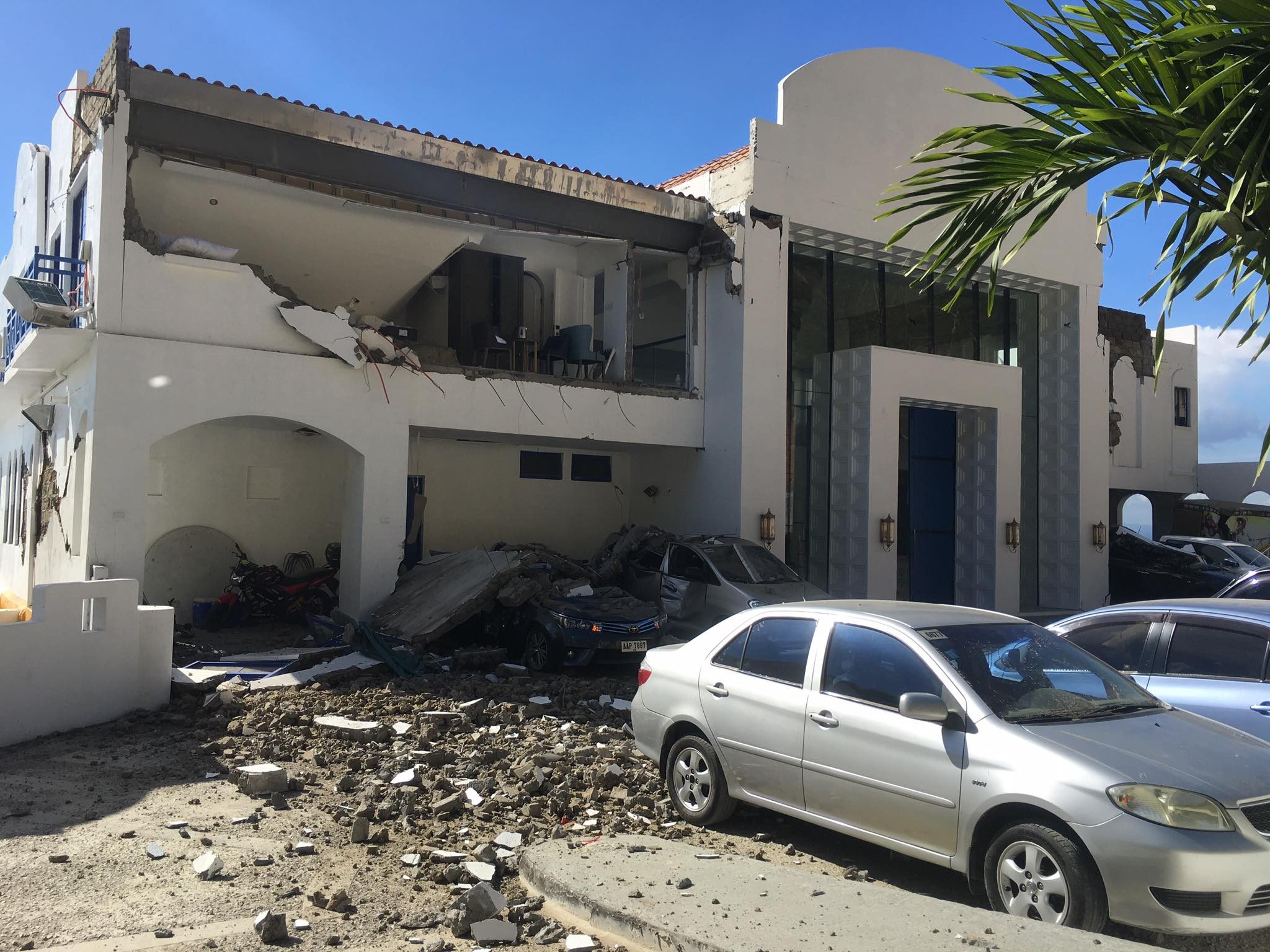SUMMARY
This is AI generated summarization, which may have errors. For context, always refer to the full article.

MANILA, Philippines – Terrified Batangas residents sought safety in public parks and higher ground on Saturday, April 8, as twin quakes rocked the province.
Some hospitals were evacuated, while the Basilica of the Immaculate Conception in Batangas City was temporarily closed to the public ahead of Holy Week following the quakes, media reports said.
The earthquakes – just 4 days after a 5.5 magnitude quake hit the same area – damaged buildings and caused panicked tourists to flee a popular dive resort in Mabini town in Batangas, the quakes’ epicenter, officials and eyewitnesses said.
There were no immediate reports of casualties from the quakes, the strongest of which hit the coast close to Mabini, a resort town south of Manila famous for its marine life and coral reefs.
The Philippine Institute of Volcanology and Seismology (Phivolcs) said a magnitude 5.6 quake first struck at 3:07 pm, off Mabini, Batangas. The United States Geological Survey (USGS) put it at 5.7.
The first quake was then followed by a magnitude 6.0 tremor at 3:09 pm, also in the same area, according to Phivolcs. USGS earlier said this tremor had a magnitude of 5.9.
Batangas Governor Hermilando Mandanas said in an interview on dzMM that more people in the province feared the latest quakes as these were stronger than the one they experienced on April 4. The quakes also knocked out power in the city, which was not the case in the earlier earthquake.
Damaged buildings
The Camp Netanya Resort in Mabini town suffered some damage. One of its walls collapsed, damaging a few parked cars. (READ: IN PHOTOS: #QuakePH causes panic, damage in Batangas resort)
“I was in the pool taking diving lessons when the ground shook….We all climbed out and ran. Concrete slabs were falling,” Filipino tourist Arnel Casanova, 47, told Agence France-Presse by telephone from a Mabini dive resort.
“When I went back to my room the ceiling had collapsed and the glass windows were broken, but so far everybody is safe,” said Casanova, who was at the resort with his 20-year-old son.
He said resort guests remained outside the damaged buildings more than an hour later as the area was hit with aftershocks.
The quakes caused landslides which blocked two roads and damaged an old church, a hospital and several houses in the area, local officials told ABS-CBN.
No threat of tsunami
“We are evacuating some people who live on the coast. We want them to stay in a safe area tonight,” Mabini Mayor Noel Luistro told the TV station.
Luistro said he expected at least 3,000 residents to move inland in case of further aftershocks, although the state seismology office said there was no threat of tsunamis.
“The town is full of tourists, both local and foreign this weekend,” he added.
The network also broadcast live footage of frightened commuters fleeing the passenger terminal at the port of Batangas, near the epicentres.
The quakes caused power outages across the region but caused no casualties, Romina Marasigan, spokeswoman for the National Disaster Risk Reduction and Management Council, told Agence France-Presse.
In Metro Manila, where the earthquake was also felt, people were seen running out of office buildings in Makati City. Some condominium buldings were also temporarily evacuated.
The Philippines lies on the so-called Ring of Fire, a vast Pacific Ocean region where many of the world’s earthquakes and volcanic eruptions occur.
Saturday’s quakes were caused by the movement of a local fault, Philippine Institute of Volcanology and Seismology chief Renato Solidum said on ABS-CBN television.
A 6.5-magnitude quake killed 8 people and left more than 250 injured outside the southern city of Surigao in February, and another 5.9-magnitude tremor killed one person there last month.
Before the Surigao quakes, the last lethal earthquake to hit the country was a 7.1-magnitude tremor that left more than 220 people dead and destroyed historic churches when it struck the central islands in October 2013. – With a report from Agence France-Presse/Rappler.com
Add a comment
How does this make you feel?
There are no comments yet. Add your comment to start the conversation.